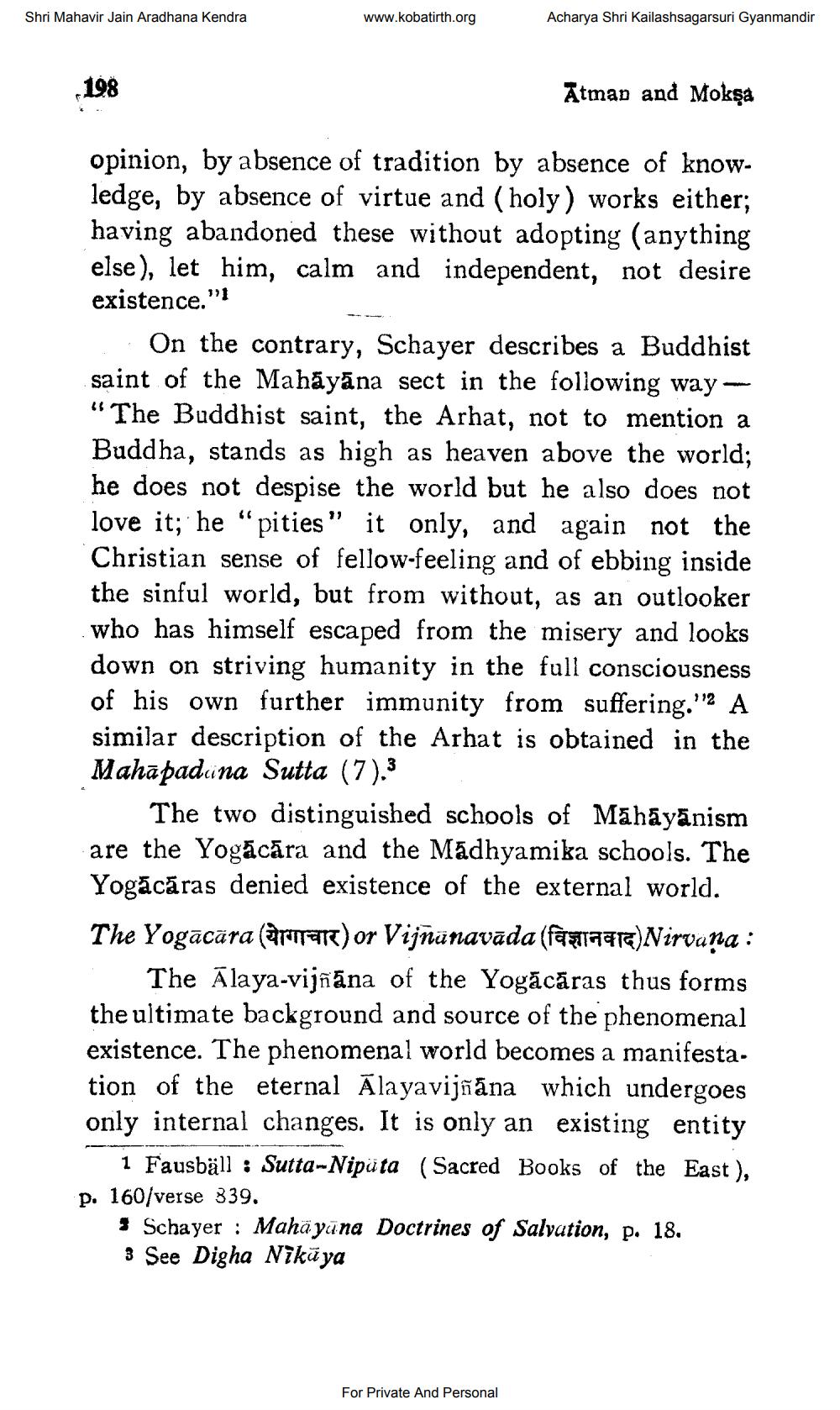________________
Shri Mahavir Jain Aradhana Kendra
www.kobatirth.org
Acharya Shri Kailashsagarsuri Gyanmandir
198
Atmap and Mokşa
opinion, by absence of tradition by absence of knowledge, by absence of virtue and (holy) works either; having abandoned these without adopting (anything else), let him, calm and independent, not desire existence."
On the contrary, Schayer describes a Buddhist saint of the Mahāyāna sect in the following way - "The Buddhist saint, the Arhat, not to mention a Buddha, stands as high as heaven above the world; he does not despise the world but he also does not love it; he "pities” it only, and again not the Christian sense of fellow-feeling and of ebbing inside the sinful world, but from without, as an outlooker who has himself escaped from the misery and looks down on striving humanity in the full consciousness of his own further immunity from suffering.'2 A similar description of the Arhat is obtained in the Mahapadina Sutta (7):3
The two distinguished schools of Māhāyānism are the Yogācāra and the Madhyamika schools. The Yogācāras denied existence of the external world. The Yogācāra (@rmare) or Vijnänavada (fax194r.)Nirvana :
The Alaya-vijñāna of the Yogācāras thus forms the ultimate background and source of the phenomenal existence. The phenomenal world becomes a manifestation of the eternal Alayavijñāna which undergoes only internal changes. It is only an existing entity
1 Fausbäll : Sutta-Nipata (Sacred Books of the East), p. 160/verse 339.
& Schayer : Mahayana Doctrines of Salvation, p. 18. 3 See Digha Nikāya
For Private And Personal




